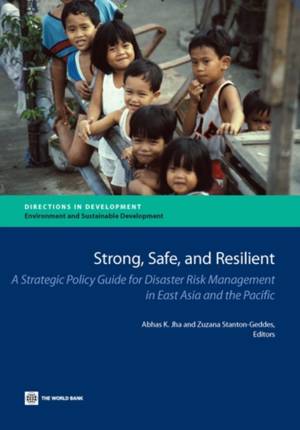
- Retrait gratuit dans votre magasin Club
- 7.000.000 titres dans notre catalogue
- Payer en toute sécurité
- Toujours un magasin près de chez vous
- Retrait gratuit dans votre magasin Club
- 7.000.0000 titres dans notre catalogue
- Payer en toute sécurité
- Toujours un magasin près de chez vous
Strong, Safe, and Resilient
A Strategic Policy Guide for Disaster Risk Management in East Asia and the Pacific
50,95 €
+ 101 points
Description
Disaster risk management is essential in the fight against poverty. Disasters can, in an instant, wipe out decades of hard-fought poverty reduction and development gains and push countless households into poverty. Disasters disproportionally affect the poor: Vulnerable and marginalized groups, including women, children, the elderly, and people with disabilities, are at particular risk.
Spécifications
Parties prenantes
- Editeur:
Contenu
- Nombre de pages :
- 202
- Langue:
- Anglais
- Collection :
Caractéristiques
- EAN:
- 9780821398050
- Date de parution :
- 06-03-13
- Format:
- Livre broché
- Format numérique:
- Trade paperback (VS)
- Dimensions :
- 178 mm x 254 mm
- Poids :
- 362 g

Les avis
Nous publions uniquement les avis qui respectent les conditions requises. Consultez nos conditions pour les avis.





